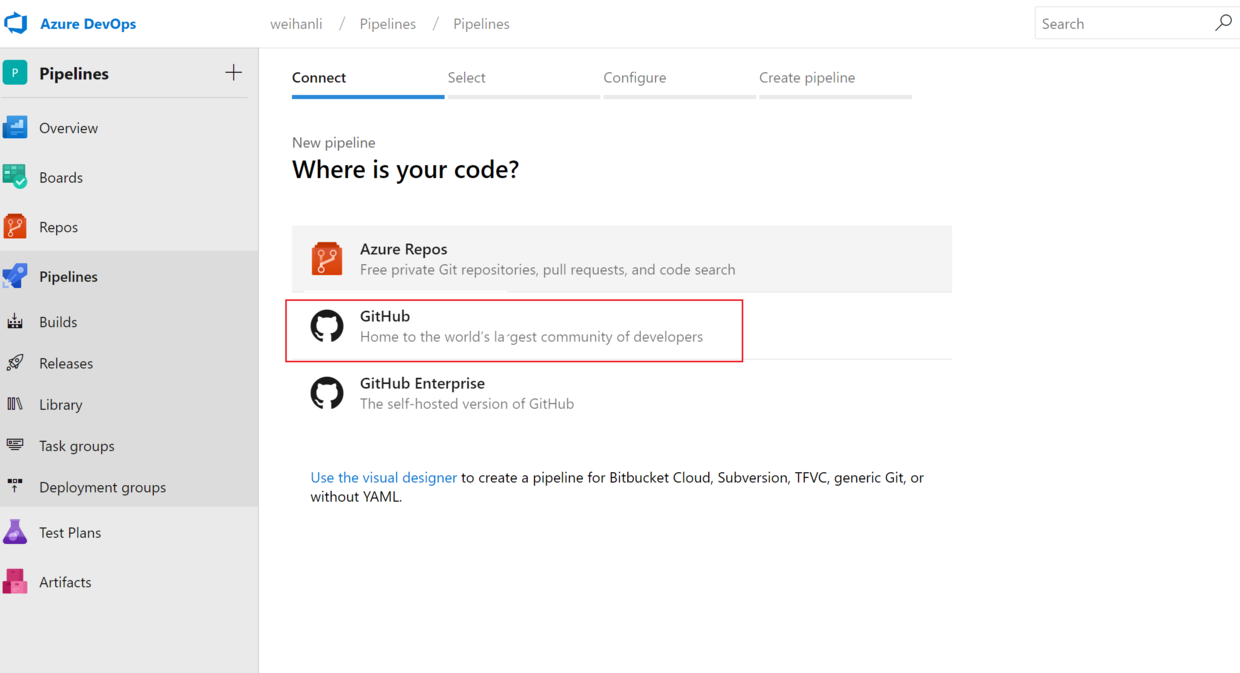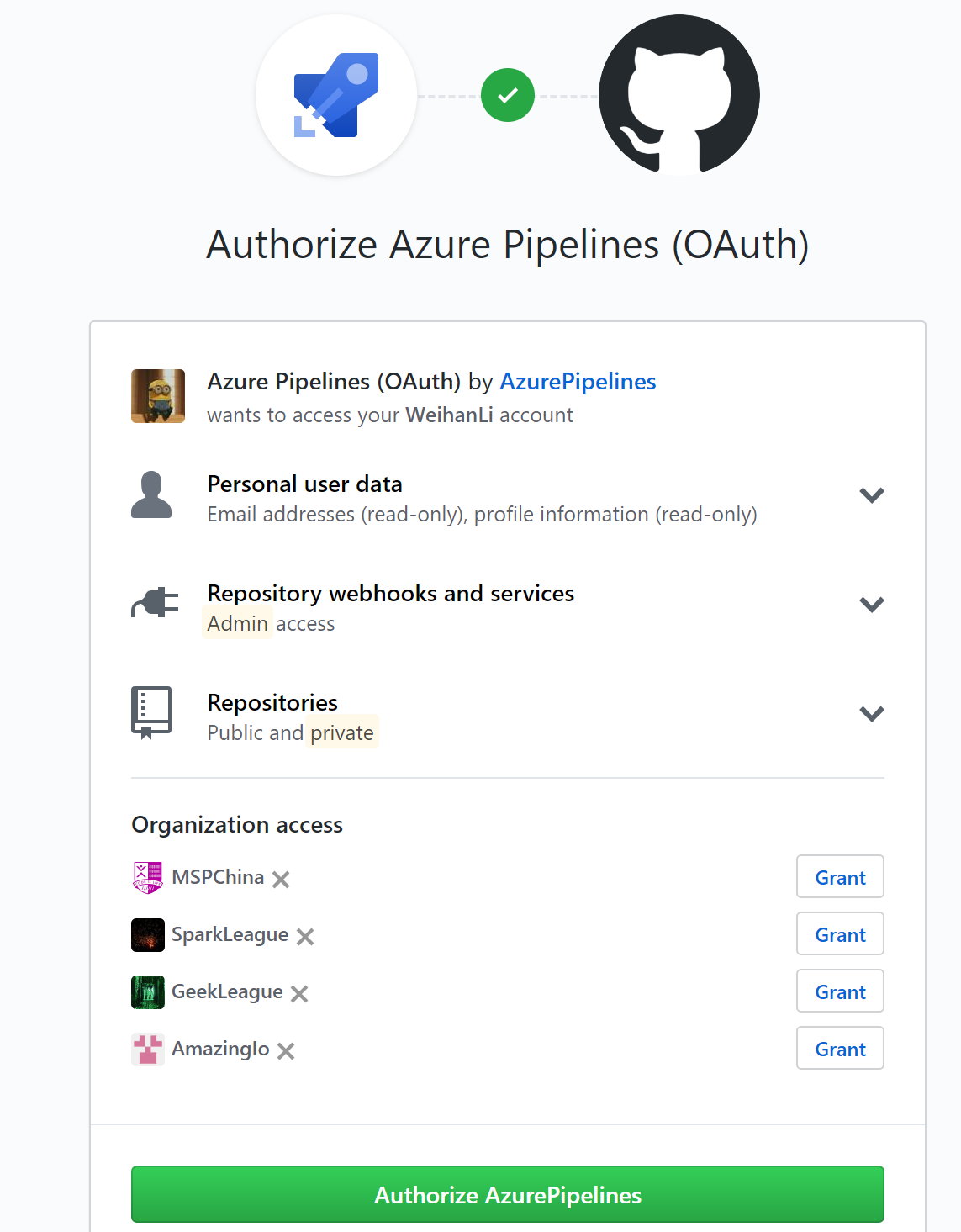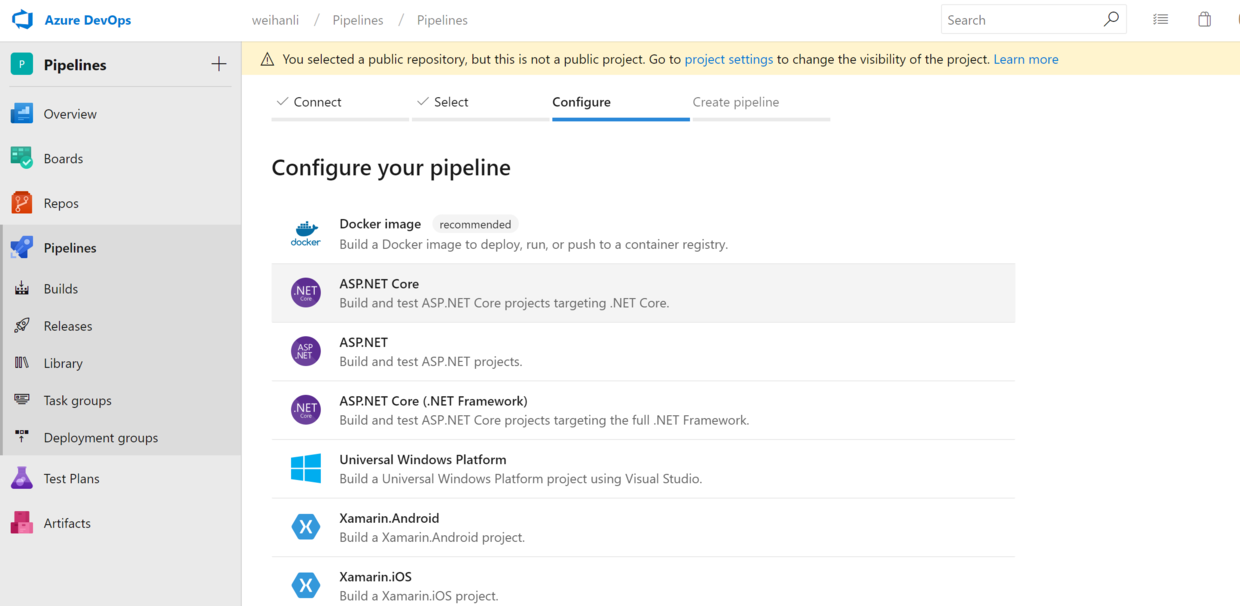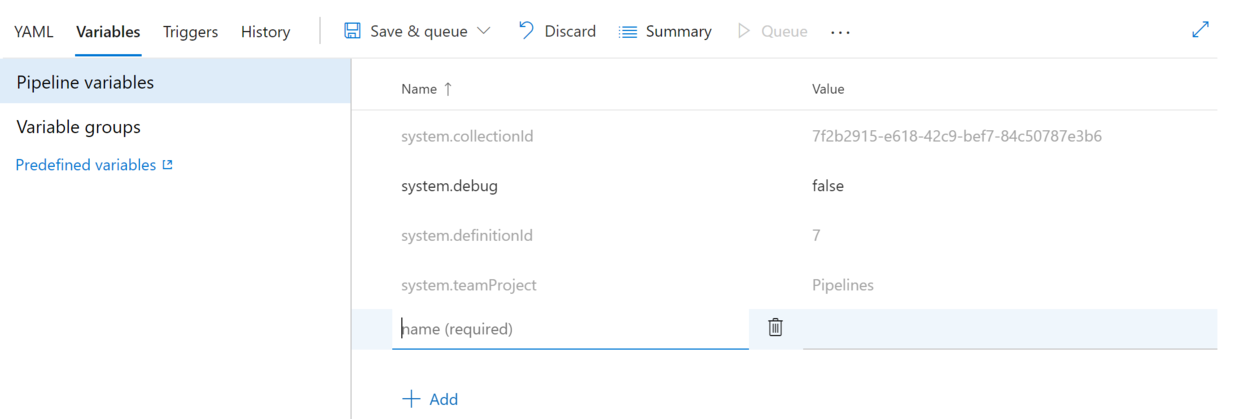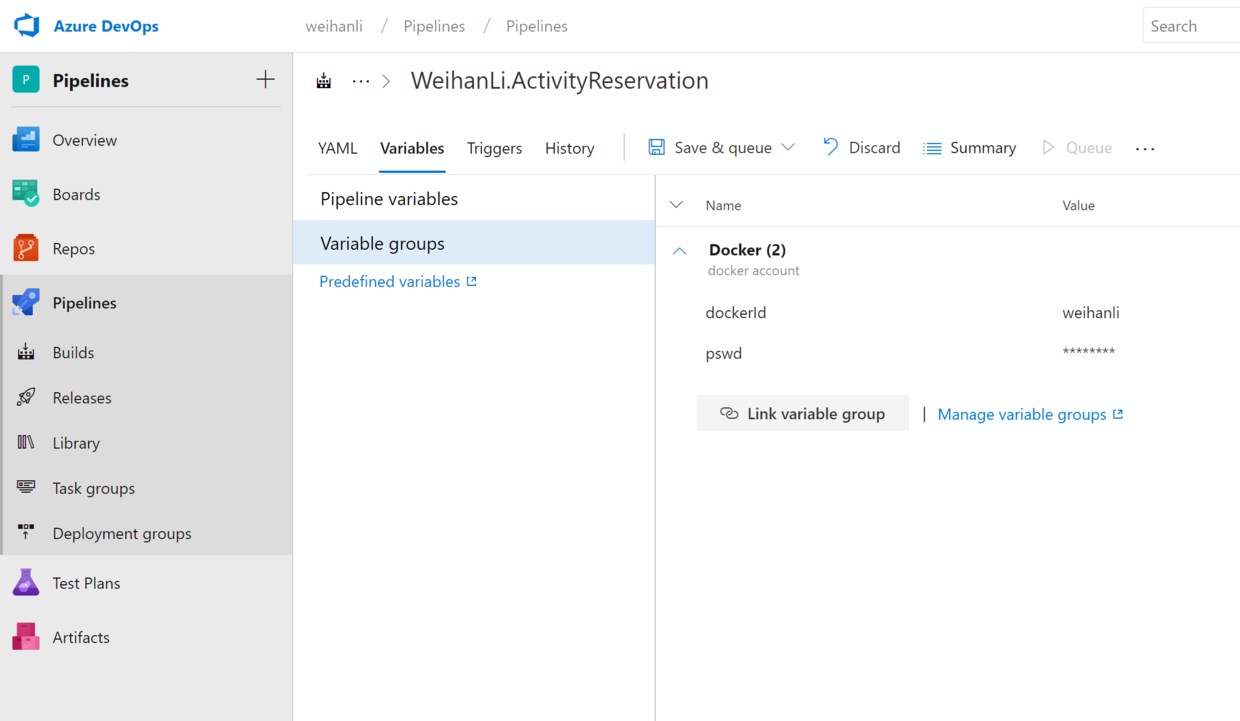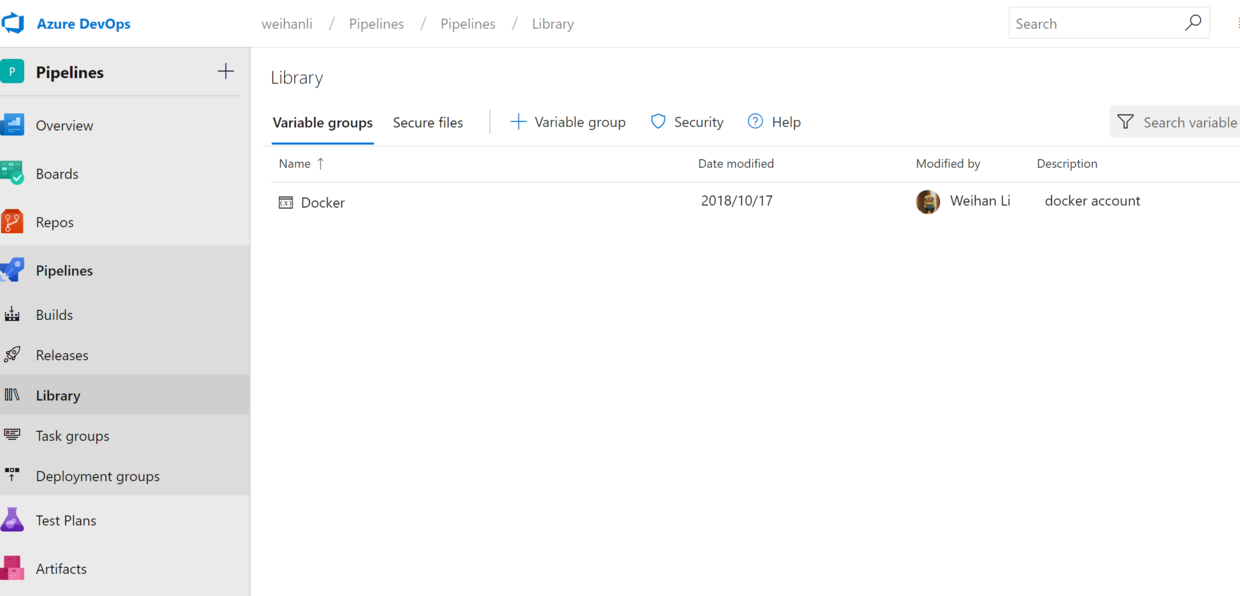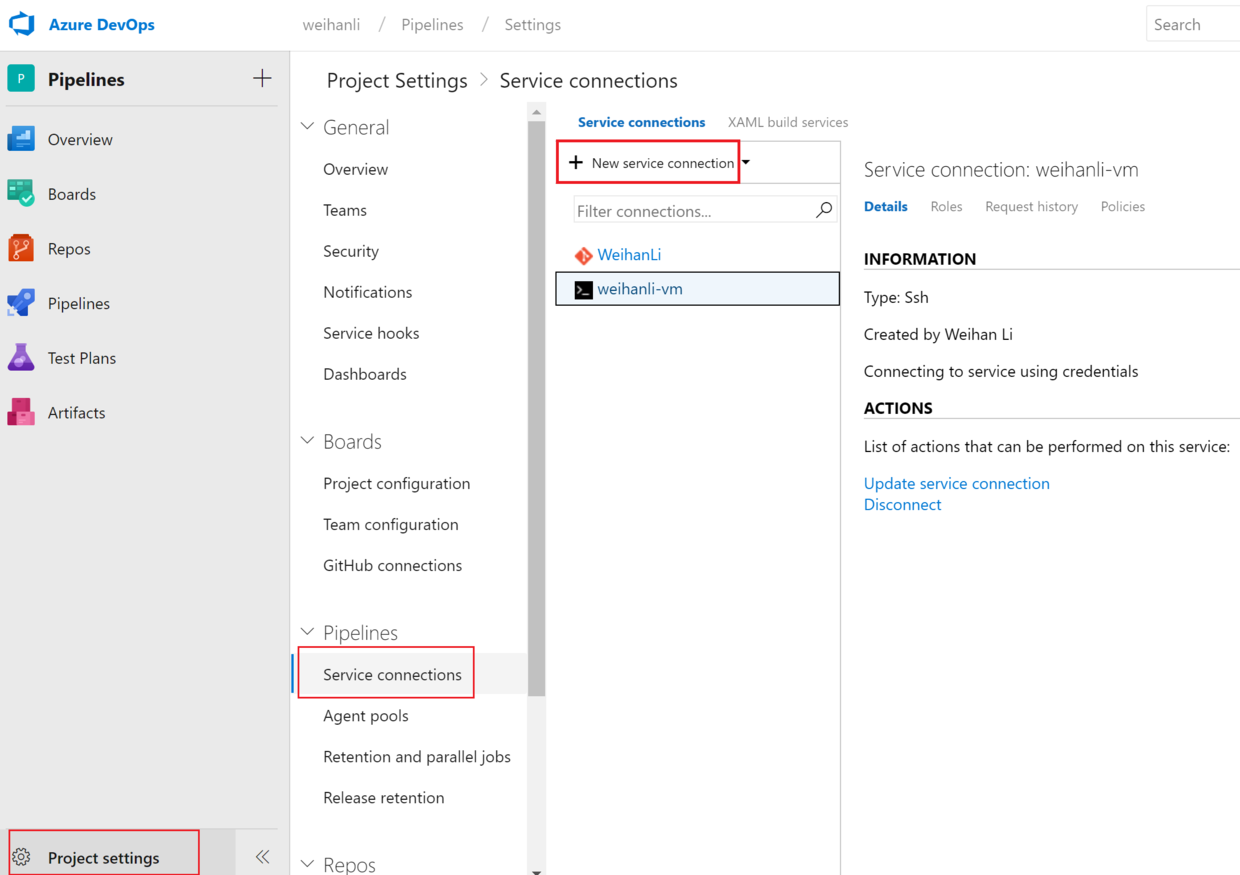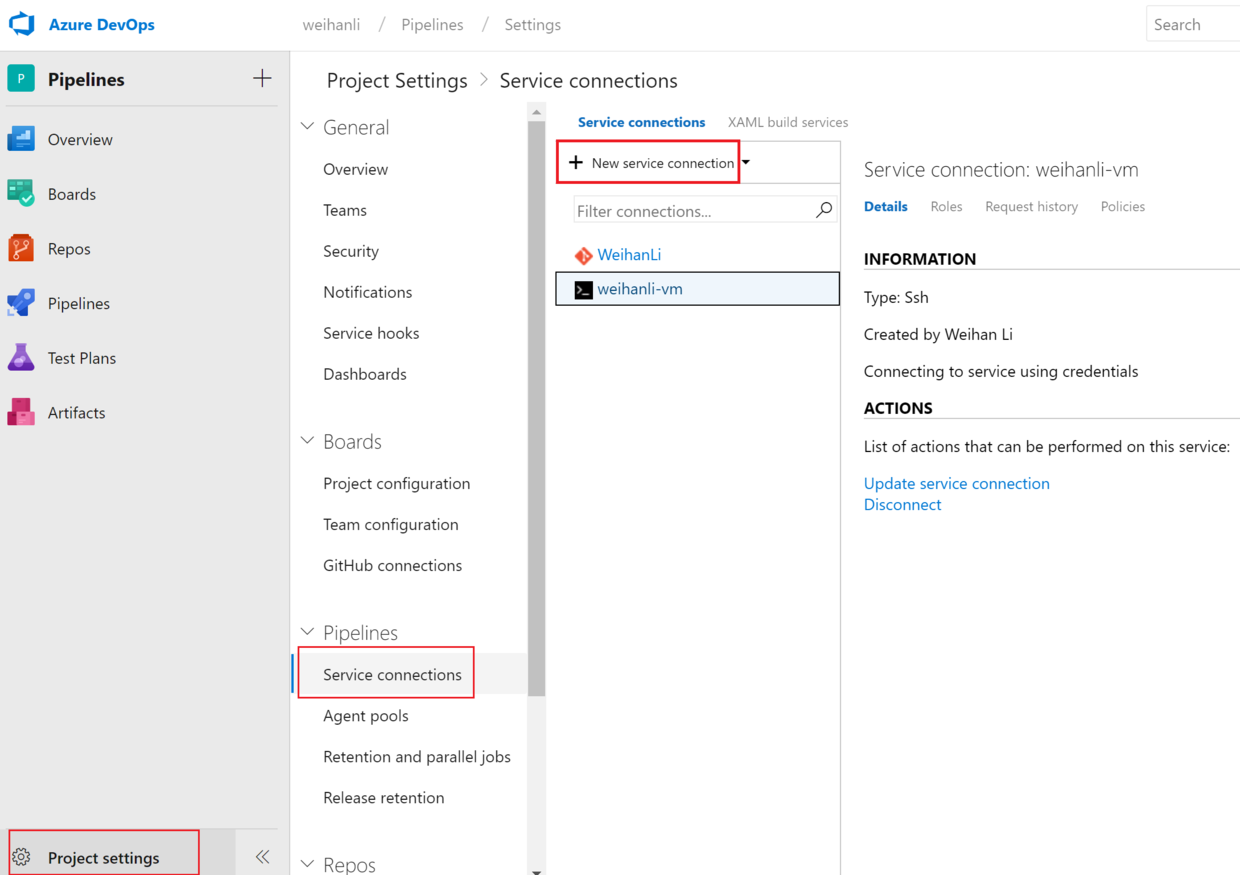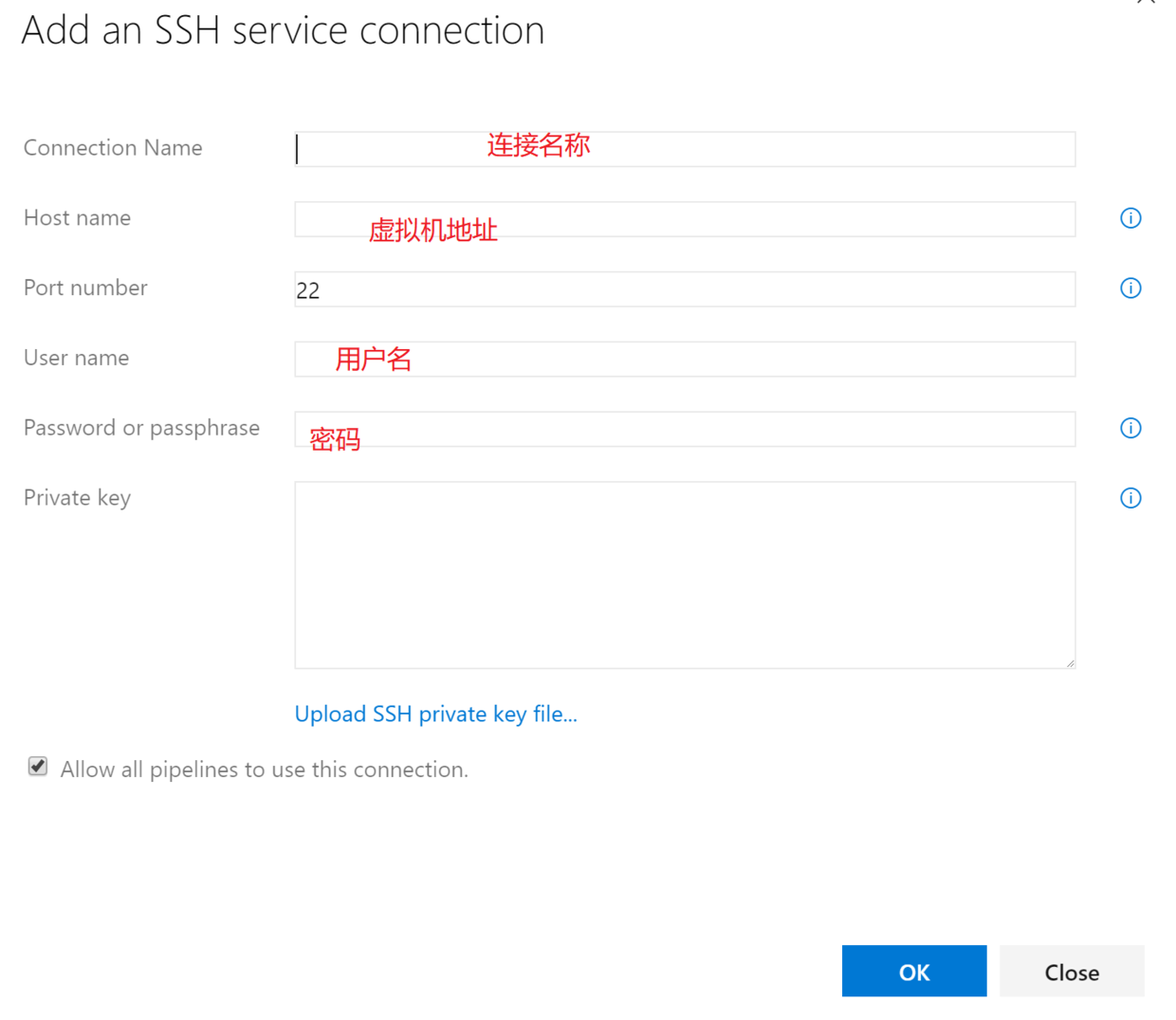通过 Azure Pipelines 实现持续集成之docker容器化
Intro#
Azure DevOps Pipeline 现在对于公开的项目完全免费,这对于开源项目来讲无疑是个巨大的好消息,在 Github 的 Marketplace 里有个 Azure Pipeline,就是微软的 Azure DevOps Pipeline。
实现 Docker 容器化的持续集成#
实现的目标:
push 代码自动打包 docker 镜像并上传至docker hub
ssh 自动部署到虚拟机上
有了docker image 之后后面就可以按照自己的需求加以定制了,比如通过ssh部署到服务器或者进行服务通知等。
新建 Pipeline#
可以在 Azure 的 devops 新建一个 pipelines 的项目来专门管理 Github 上的pipeline
新建一个pipeline
第一次使用的话,会需要进行授权
授权之后就可以选择 Github 上的项目了,选择要配置的项目
可以基于模板创建也可以选择下面基于已有的 yaml 文件创建
Azure pipeline config#
这里提供一份示例,源代码在这里:
# Docker image# Build a Docker image to deploy, run, or push to a container registry.# Add steps that use Docker Compose, tag images, push to a registry, run an image, and more:# https://docs.microsoft.com/azure/devops/pipelines/languages/dockerpool: vmImage: 'Ubuntu 16.04'variables: imageName: '$(dockerId)/activityreservation'steps:- script: | docker build -f Dockerfile -t $(imageName) . docker login -u $(dockerId) -p $(pswd) docker push $(imageName)
pipeline 配置解析#
agent pool 配置
通过 vmImage 来指定要用来执行 build 任务的 agent
pool: vmImage: 'Ubuntu 16.04'
variables
可以通过 variables 来指定一些全局变量,这里我用了一个 imageName 的变量来设置 docker 镜像的名称
variables: imageName: 'activityreservation'
敏感信息的存储
要上传 docker 镜像,我这里是直接上传到 docker hub 上,需要 docker 的用户名以及密码,pipeline 可以设置一些不配置在 pipeline 配置文件里的其它配置,一些敏感信息就可以这样配置来保证安全访问
可以将 pipeline 独有的一些配置放在 Pipeline Variables 里,一些比较通用的,别的 pipeline 也会使用的变量可以放到一个 Variable groups,然后在 pipeline 的 variables 里 link 一下对应的 Variable Group 就可以使用 group 里配置的变量了,我把 docker 的 username 和 password 配置在了一个 docker 的 Variable Group 里。
docker 镜像的打包以及上传
配置 pipeline 的 step,step 对应的就是需要 build agent 去执行的task
steps:- script: | docker build -f Dockerfile -t $(imageName) . docker login -u $(dockerId) -p $(pswd) docker push $(imageName)
配置上面的脚本我们就可以自动 build 并 push docker 镜像了。
build 完成之后再去 docker hub 上查看对应的 docker 镜像就会发现 docker 镜像已经更新了。
在 vm 上自动部署 docker 镜像#
首先要在 pipeline 上新建一个 SSH 的 Service Connection
steps:- script: | docker build -f Dockerfile -t $(imageName) . docker login -u $(dockerId) -p $(pswd) docker push $(imageName)- task: SSH displayName: 'Run shell inline on remote machine' inputs: sshEndpoint: 'weihanli-vm' runOptions: inline inline: | containers=$(docker ps -q --filter name=activityreservation) if test -n "$containers"; then docker stop $(docker ps -q --filter name=activityreservation) >> /dev/null 2>&1 rc=$? if [[ $rc != 0 ]]; then echo 'failed to stop container...' exit $rc; fi fi containers1=$(docker ps -q -a --filter name=activityreservation) if test -n "$containers1"; then docker rm $(docker ps -q -a --filter name=activityreservation) >> /dev/null 2>&1 rc=$? if [[ $rc != 0 ]]; then echo 'failed to remove container...' exit $rc; fi fi docker pull $(imageName):latest >> /dev/null 2>&1 rc=$? if [[ $rc != 0 ]]; then echo 'failed to pull container...' exit $rc; fi docker run -d -p 7010:80 --name activityreservation --link redis:redis-server $(imageName):latest >> /dev/null 2>&1 rc=$? if [[ $rc != 0 ]]; then echo 'failed to run container...' exit $rc; fi danglings=$(docker images -f "dangling=true" -q) if test -n "$danglings"; then docker rmi $(docker images -f "dangling=true" -q) >> /dev/null 2>&1 rc=$? if [[ $rc != 0 ]]; then echo 'failed to remove danglings container...' exit $rc; fi fi
sshEndpoint 设置为连接的名称,inline 后面是在远程执行的脚本,大概流程如下:
检查是否有指定名称的 container 在运行,如果有 stop 并 remove
拉取最新的 docker 镜像
运行 docker 容器
移除可能的悬挂镜像(名称为 none 的中间镜像)
验证#
配置完成之后我们就可以提交代码,就会自动出发 build,自动执行我们定义的 pipeline 任务,按照上面的配置的话,就会先 build 并 push Docker 镜像到 docker hub,然后 SSH 到远程服务器,远程过去之后执行脚本,停掉并移除指定的 docker 容器(如果有)然后拉取并部署最新的docker镜像,最后清理资源,删除 docker 悬挂镜像。
示例项目#
现在有两个项目是这种模式去自动化部署的,源代码以及 pipeline 的配置都在 Github 上
现在这两个项目的部署模式是这样的,以活动室预约系统为例:
前面一个 nginx 作为反向代理,后面是直接跑在 docker 容器里
nginx 示例配置:
server { listen 80; listen 443; if ($scheme = http) { return 301 https://$host$request_uri;
} server_name reservation.weihanli.xyz; location / { proxy_pass http://localhost:7010; proxy_set_header X-Real-IP $remote_addr; proxy_set_header X-Forwarded-For $proxy_add_x_forwarded_for;
}
}这里会把 reservation.weihanli.xyz 的请求转发到 localhost:7010 ,也就是这个 docker 镜像映射的本地端口
Memo#
如果有什么问题或建议,欢迎与我联系
作者:WeihanLi
出处:https://www.cnblogs.com/weihanli/p/10464507.html
本站使用「署名 4.0 国际」创作共享协议,转载请在文章明显位置注明作者及出处。
共同学习,写下你的评论
评论加载中...
作者其他优质文章


